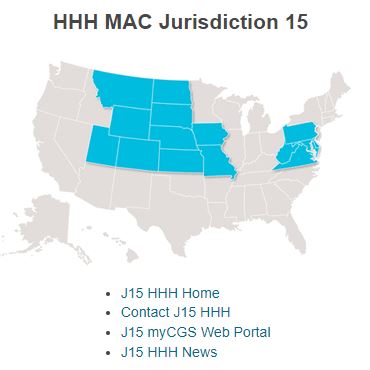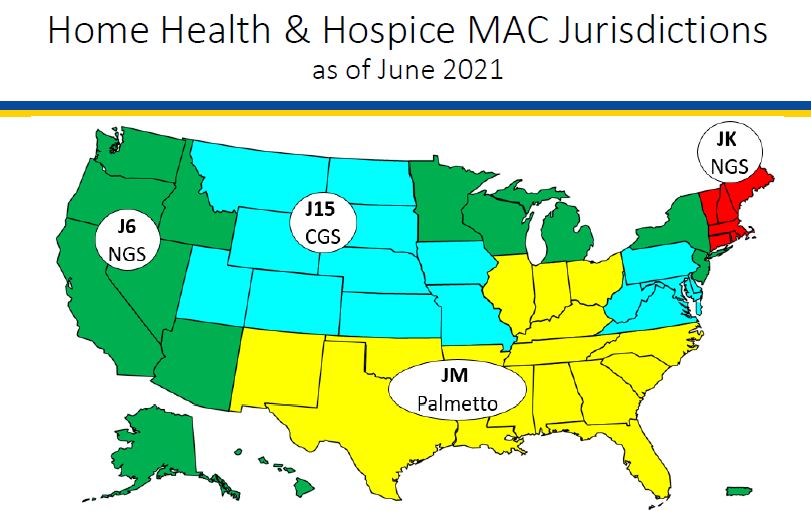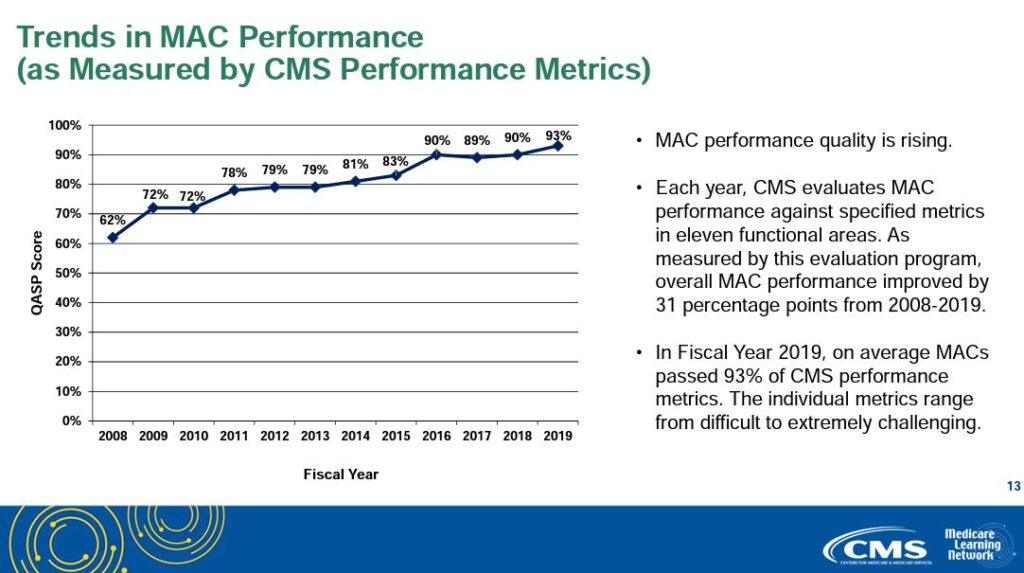
by editor | Feb 12, 2024 | Budgeting, Financials
Financial statements record an agency’s financial activities and convey the agency’s financial health. Financial statements are often audited by accountants to ensure their accuracy and are prepared in accordance with a specific set of accounting rules called Generally Accepted Accounting Principles (GAAP). GAAP ensures that financial statements are consistent and comparable across agencies.
In some instances, agencies are required to follow GAAP in preparing their financial statements. For example, the financial statements that are submitted with hospice cost reports must be prepared in accordance with GAAP.
An agency’s financial statements describe the results of the agency’s operations and provide information about the agency’s assets and liabilities, revenues and expenses as well as cash flow activities. Together, this information provides a picture of the agency’s financial health and activities and can be used to monitor agency performance over time. An agency’s financial statements can also be used to support decision-making.
There are three key financial statements
The three key financial statements are the balance sheet, the income statement, and the cash flow statement.
The balance sheet provides a snapshot of the agency’s financial health at a given point in time. It lists the agency’s assets and liabilities as of the last day of a specified period, also known as its capital structure. The balance sheet will usually be produced on a quarterly basis.
The income statement, also known as the profit and loss statement, provides information on all the agency’s revenue and expenses during a specified period. The income statement is usually prepared quarterly, often as an aggregation of internal monthly ledgers, and is used to review revenue and expenses over the period. Subtracting expenses from revenues results in the agency’s profit, also called the net income.
The cash flow statement details cash inflow and outflow over a specified time period. Cash flow statements are generally prepared quarterly and are separated into operating activities, investment activities, and financing activities. The cash flow statement, which tracks how the agency uses its cash over a period of time to fund operating expenses and investments and pay off its debt obligations, provides a view of the agency’s liquidity and cash sources and uses, which can provide insight into the ability of the agency to generate sufficient cash to support its operations over the near- and long-term horizon.
How can an agency director use financial statements?
Financial statements are critical to assess the financial viability of an agency, its capital structure, income generation and cash flow needs. Financial statements can also be used to measure the impact of initiatives on the agency’s bottom line. Compare direct expenses to revenue, as reported on the income statement. Did revenue increase? Were expenses reduced? How did the net income compare to expectations?
Financial statements also provide information on agency spend and cash flows and can provide insight into how cash uses are allocated. Periodically reviewing expenses, when necessary on a line by line basis from the relevant internal ledgers, can provide visibility into potentially unnecessary costs and areas where expenses can be reduced and spend can be reallocated to more productive areas.
Analysis of financial statements can provide an overall agency view of revenue and expenses, identifying how different areas in the agency are contributing to overall financial performance. This can support discussions with different area leads on goals and budgeting and helps management reassess overall agency performance. Financial statements can also be used to motivate and engage the agency’s teams. The income statement can show employees how their activities impact revenue, providing them with an understanding of how they can directly impact agency financial health. Remember, only a financially strong agency can deliver improved patient services and higher quality of care.
Where can you find out more?
Financial statements as a management tool
Business owner perspective on financial statements
: What are the three key financial statements?
by editor | Sep 29, 2022 | Billing, Billing - General, Compliance and Regulatory - Directors, Financials, Rules and Regulations - Office Team
What is Medicare credit balance?
A Medicare credit balance represents a Medicare overpayment to a provider due to patient billing error or claims processing error that must be refunded to Medicare. The report is referred to as a Credit Balance Report because when a provider receives excess payment for a claim that was submitted, this is typically reflected in the provider’s accounting records (i.e., in the patient account receivable) as a “credit.”
What instances may give rise to a credit balance?
Different situations may give rise to a Medicare overpayment. For example:
- Paid twice by Medicare or may be paid by Medicare and by another insurer for the same service
- Incorrect calculation of patient deductible or patient coinsurance amount
- Paid for non-covered services
- Billed at incorrect daily rate
Which hospice agencies must file a Credit Balance Report?
If a hospice provider has more than one provider number, a separate report must be submitted for each provider number. Providers who have a low utilization (i.e., determined by the intermediary that they should file a low utilization Medicare cost report) or who file less than 25 Medicare claims per year are not required to file a Medicare Credit Balance Report.
What does a credit Balance Report Consist of?
The Credit Balance Report consists of two pages. The first page is a Detail Page, where the hospice provider enters information about each credit balance, on a claim by claim basis. Once a claim has been reported on one Credit Balance Report it should not be reported again on a subsequent Credit Balance report. The second page is a Certification Page. All providers must complete the Certification Page. The Detail Page is only required if the provider has credit balances to report.
The Detail Page
On this page, the provider must include detailed information about each Medicare claim with a credit balance, explanation why the credit balance arose, and indicate whether the credit balance is being repaid with the filing of the report.
The Certification Page
The second page of the Credit Balance Report is a certification page. Facilities that do not have any credit balances in a quarter are only required to submit the signed certification page. There are key areas of this page.
- The first area serves as a reminder that there is a requirement to file a Credit Balance Report and failure to file this report will result in suspension of Medicare payments. Further, any misrepresentations may lead to fines and further penalties
- The second area requires an officer or administrator of the hospice agency to sign a certification that that Credit Balance Report is true and accurate
- The third area requires a selection from one of three choices: (i) provider qualifies as Low Utilization Provider (ii) Detail Page included with Report (iii) no credit balances to report
When is the report due?
A hospice provider must assess any Medicare credit balances on a quarterly basis and must report any identified Medicare credit balances within 30 days of the end of each calendar quarter. The Medicare Credit Balance Report due dates are as follows:
| Quarter Ending |
Due Date |
| March 31 |
April 30 |
| June 30 |
July 30 |
| September 30 |
October 30 |
| December 31 |
January 30 |
What happens if a provider fails to submit a Credit Balance Report?
Failure to submit a Credit Balance Report by the 15th calendar day after the report due date will result in a Suspension Warning letter. If the completed report is not received within 15 calendar days from issuance of the letter, Medicare payments to the provider are suspended under a completed letter is received, accepted, and processed.
Where can you find a Credit Balance Report form?
The Credit Balance Report that must be completed and submitted is Form CMS-838, which can be found here: Medicare Credit Balance Form (pdf)
by editor | Sep 20, 2022 | Billing, Billing - General, Compliance and Regulatory - Directors, Financials, Intake, Notice of Election, Rules and Regulations - Nurses, Rules and Regulations - Office Team
by editor | Sep 12, 2022 | Billing, Billing - General, Compliance and Regulatory - Directors, Documentation - Nurses, Financials, Hospice 101 - Nurses, Intake, Medical Records, Metrics and KPIs, Notice of Election, Rules and Regulations - Nurses
A hospice must file a Notice of Election (NOE) within five days after the beneficiary’s hospice admission date.
What is considered timely filing of an NOE?
For an NOE to be considered timely:
- The NOE must have a receipt date within five calendar days after the hospice admission date
- The NOE must process and finalize in status/location P B9997
For example:
- Patient admitted on 5/8
- NOE submitted on 5/13
- NOE processed on 5/27
To be timely, the NOE must have a receipt date of 5/13 and the NOE must subsequently process (P B9997)
However, if the NOE is not filed timely, Medicare will not cover and pay for the days of hospice care from the date that the patient is admitted until the date the NOE is submitted and accepted. For example:
- Admission date: 5/1
- NOE receipt date 5/10
- NOE processed 5/18
Non covered days: 5/1 through 5/9 (one day before NOE receipt date)
- Admission date 5/1
- NOE receipt date 5/10
- NOE processed 5/18
Non covered days: 5/1 through 5/9 (one day before NOE receipt date)
What happens if a hospice must resubmit an NOE due to errors?
Sometimes an NOE is submitted but it is not accepted due to a need for corrections. The NOE is “RTPd” (Returned to Provider) and is then resubmitted by the hospice. The date that the NOE is resubmitted by the hospice is considered the submission date.
How should a hospice file a claim if the NOE was filed late?
If a hospice has a late NOE, the claim must be filed showing the late filed NOE. It must also show occurrence code OSC 77, indicating the non covered dates. The claim will have two rows, one row for the non-covered days and one row for the covered days.
See Submitting Claims for Untimely NOEs for more details on billing when NOEs are untimely.
For more information on submitting claims, read some of our posts here Hospice Keys Billing Blogs

by editor | Sep 12, 2022 | Billing, Billing - General, Compliance and Regulatory - Directors, Financials, Metrics and KPIs, Office Setup, Rules and Regulations - Nurses
A Medicare Administrative Contractor (MAC) is a private health care insurer that has been awarded a geographic jurisdiction to process Medicare Part A and Part B medical claims for Fee For Service (FFS) beneficiaries.
CMS relies on these contractors to serve as the primary operational contact between the Medicare FFS program and the health providers enrolled in the program.
MACs are multi-state regional contractors who are responsible for administering Part A and Part B claims.
What types of MACs are there?
There are two types of MACs: Part A/B MACs and DME MACs.
Hospice claims are administered by Part A/B MACs. Part A/B MACs process about 95% of all FFS claims.
There are 12 Part A/B MACs.
Four of the MACs specialize in processing claims for hospice and home health providers
What geographic areas do each of the hospice and home health MACs cover?
The following map shows the geographic regions that each of the hospice MACs is responsible for administering.

What activities do MACs perform?
MACS perform a number of activities including:
-
Provider Enrollment
-
Claims processing, payment, and payment notices
-
Provider customer service (but not beneficiary customer service)
-
Audit provider cost reports
-
Respond to provider inquiries
-
Audit payments and review medical records
How are MACs measured and how well do they perform?
Each year, CMS evaluates MAC performance against specific metrics in eleven functional areas. MAC performance quality has been consistently improving since CMS began measuring MAC performance. Average MAC performance has increased from 62% to 93% since CMS began measuring MAC performance.

Print ‘n take hospice keys
- Seeking to contact your MAC? Here’s their contact information
hospiceKeys - CMS MAC contact
Download
- A map of MAC regional jurisdictions
hospiceKeys - CMS MAC
Download
Where can you find more information?
This PowerPoint from Medicare Learning Network provides more helpful information about MACs: MLN MAC PowerPoint
by editor | Sep 8, 2022 | Billing, Billing - General, Compliance and Regulatory - Directors, Financials, Intake, Notice of Election, Rules and Regulations - Nurses, Rules and Regulations - Office Team
What is a Notice of Election?
When a Medicare beneficiary elects hospice services, the hospice must complete an election notice with the beneficiary and file a Notice of Election (NOE) with Medicare.
When must a Notice of Election be submitted?
A hospice notice of election must be submitted and processed prior to submitting the first hospice claim. Beginning October 1, 2014, Medicare has implemented a requirement that the hospice agency must file a NOE within 5 calendar days after the date of the hospice election notice.
In addition to filing the NOE, the NOE must be accepted by the Medicare claims system. For an NOE to be accepted, it must be a “clean submission.” That is, the NOE may not have any errors.
If the NOE has any errors, it will be returned to the provider (RTP’d) for correction. When the provider corrects and resubmits the NOE, the NOE will be assigned a new received date. This new date will be used to establish timely filing with respect to Medicare’s five day requirement.
There are three ways that a hospice provider can submit an NOE
– Using Direct Data Entry (DDE):
DDE is a real time Fiscal Intermedicary Shared System (FISS) application that gives hospice providers the ability to submit claims, monitor the status of claims, and correct claims. It can also be used by providers to monitor claims and requested documentation and to check beneficiary eligibility information.
Providers can manually enter the NOE into DDE via the different relevant screens.
– Submit electronically:
This option became available effective January 1, 2018. The hospice industry requested requested that Medicare implement NOE submission via Electronic Data Exchange (EDI), as this would eliminate keying errors associated with NOE (and thus reduce the number of NOEs that were RTP’d for keying errors since the data for the NOE could be exported directly from the patient’s electronic medical record). Note that NOEs should not be batched with claims
– Paper submission on UB-04 claim forms. .
Where can you find detailed information about completing the NOE?
A helpful job aid has been created that provides details on how to complete the notice of election, with details on the different data requirements depending upon the method of submission: Palmetto NOE job aid




